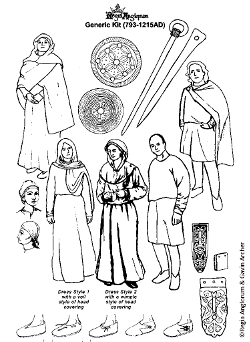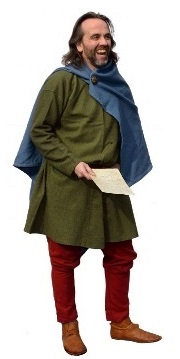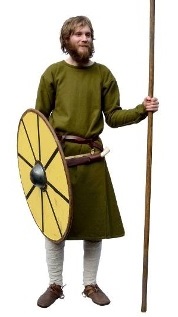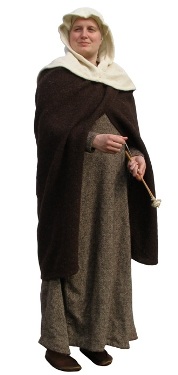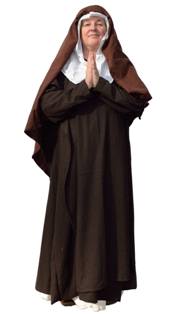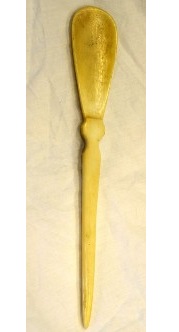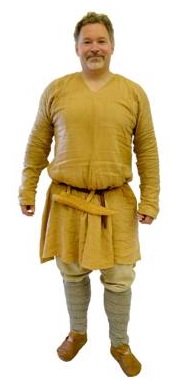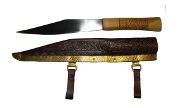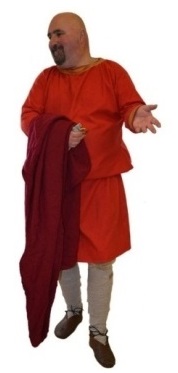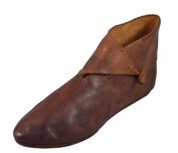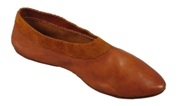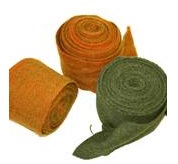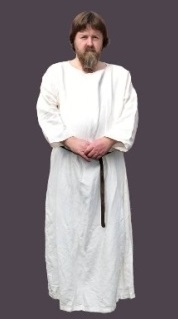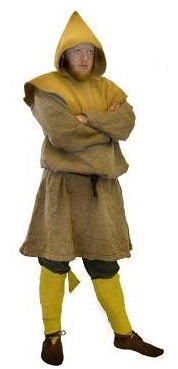Authenticity Officer’s Photo Guide – Examples of Authentic Kit
The Examples of Authentic Kit is a gallery of good examples of authentic kit, and can be used by members as a guide for what to aspire to. However, it is also an open competition amongst the membership, where they can submit photographs of themselves in kit – with examples of the most authentic kit being shown here.
All Periods
All Periods793 - 899
793 - 899900 - 979
900 - 979980 - 1041
980 - 10411042 - 1079
1042 - 10791080 - 1179
1080 - 11791180 - 1215
1180 - 1215Generic kit that can be worn at any Regia Anglorum event.
Christian doctrine dominates women’s fashion throughout Regia’s period of interest, never more so than with regards to the instruction by St Paul for women to cover their hair. Although women adopted a number of ways of achieving this between the 9th to 13th centuries, three methods remained fairly consistent throughout: the long scarf type veil, the hood like wimple and the simple tied head scarf for working in. Head coverings are usually white and made from plain linen or light-weight wool.
A simple style of dress is worn throughout, coming to the ankle and to the wrist. The cuff of the dress can be either worn tight to the wrist or else loose, showing the cuff of the shift underneath. Neck-holes are either round or oval, and can have a keyhole opening. Decoration, in the form of facings, embroidery or tablet weave, is generally only applied to the cuffs. Dresses are usually made from wool but can also be from linen. Tied belts of simple braid or cloth can be worn, but never belts of leather.
For additional warmth a cloak can be worn. These are closed at the chest by either a disc brooch or by ties. Small delicate dress brooches are also sometimes worn such as the cloisonné brooches or bird brooches. Delicate pins of bone, copper-alloy or silver were used to help secure clothing especially the head covering.
Shoes are of the simple, two-part turn shoe construction and are usually low, coming to below the ankle. Belongings can be carried in a shoulder bag of wool, linen or leather.
The primary garment is the tunic. Its skirt comes to the knee cap or just above and the sleeves are always worn tight to the forearm and wrist. Neck-holes are either round or oval, and can have a keyhole opening. Decoration, in the form of facings, embroidery or tablet weave, can be applied to the cuffs and neck-hole but not around the hem of the skirt. Tunics are usually made from wool but can also be from linen.
Belts can be made from either braided wool or from a leather strap. They can be simply tied or else closed by a buckle of bone, iron or copper-alloy. Belts often have strap-ends attached. In their simplest form a strap-end can be made from a simple folded strip of copper-alloy or iron. More elaborate forms are from cast copper-alloy or silver and have designs in Winchester or other art styles. A small knife is often carried in a leather sheath suspended from the belt.
For additional warmth a cloak can be worn. These are closed on the shoulder of the wearer’s sword arm by either ties or a disc brooch, pin.
Leg coverings, if worn at all, should be tight to the leg and can be trousers or hose and braies. Leg wraps can also be worn. These are long strips of 10cm wide woollen cloth worn wound about the lower leg from the ankle to the knee.
Shoes are of the simple, two-part turn shoe construction and are usually low, coming to below the ankle. Belongings can be carried in a shoulder bag of wool, linen or leather. A small drawstring pouch can be worn at the waist.
Although weapons and armour evolved considerably over Regia’s period of interest the following can be used at any event.
A spear is the primary weapon for all warriors throughout Regia’s period, grasped in one hand and used over-arm. A large wooden round shield is the primary form of defence, faced in leather or cloth and with an iron boss covering the centre grip. Additional weapons could include a seax, a large single edged knife; a simple non-bearded hand axe; or if they are very lucky, a sword with a tri-lobe, tea-cosy or Frankish style of pommel. Although sword styles changed noticeably these pommel types are deemed to be passable at all events.
Professional warriors are better armed and protected. They can wear a conical or domed shaped iron helmet, a ‘byrnie’ style of mail shirt and would usually carry a sword.
Simple wooden long-bows are used in all periods, as are javelins. The use of archery on the battlefield increases dramatically after the Battle of Hastings in 1066. The same can be said for cavalry. Before 1066 horses were rode to and from battle but the actual fighting was performed on foot. This was not the case in Europe and the Normans brought the mounted knight with them in 1066 for the years after.
An educated freeman of some wealth as shown by the colours of his clothing. He wears the common short everyday cloak. This look can be worn at any Regia event.
GaryBased on elements from Sutton Courtaney, Bishopstone, London. We have a number of furnishings based on Sussex finds including pottery, tools, grind stone. The wooden frame is made from seasoned oak using joints known from the period The roof is made from oak shingles and cleaved oak battons. The door is made from walnut (slightly exotic, but was readily available to us) and is wider than would have been originally, to enable wheelchair access.
Hastingas Portable HouseEvery 5 hides of land have to supply a part-time warrior when called upon by the King. The warrior must be adequately equipped with a minimum of a spear, short arm and shield.
MichaelFollowing the rules of the church, her hair is covered by a wimple worn atop a wrap over cloak. Her woollen clothing is undyed. This look can be worn at any Regia event.
LouiseA 'mynecen' or a nun living in a convent - following the Rule of St Benedict. Dark wool dress and veil, white underdress and wimple.
JaneMade from the long bones of cattle and horses, bone spoons are used throughout Regia’s period.
by Roland WilliamsonThis freeman wears a yellow linen shirt with a V-neck opening. In addition he carries a war-knife, known as a seax, in a sheath suspended from his belt and leg bindings around his lower legs.
MikeSeax Blades vary in length from between 7'' to 11''. Sheaths are usually decorated in Winchester styles and simple knot work, applied by tooling.
by Ted JonesThis Lord wears a madder dyed tunic and cloak. The neck and cuffs of his tunic are decorated in tablet weave and his cloak is closed with a large disc brooch.
PatSimple low ankle boots like these were common in England, Frisia and France.
by Ana DeisslerSimple slip on shoes like these have been found in England, Ireland and Denmark.
by Ana DeisslerThis longhall was built by Regia members on our own permanent site in Kent.
WychurstMany men wear leg bindings wrapped around their lower legs. They average 9cm wide, have a natural selvage and are primarily woven in a twill to give them more stretch.
By Liz DabornWorn by acolytes, thurifers and other functionaries across all of Regia's periods.
Martin